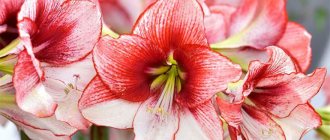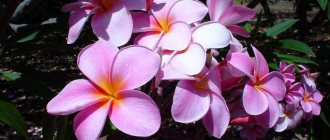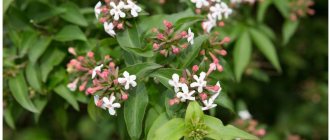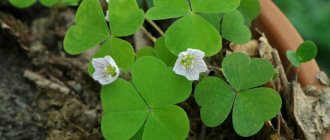There are 5 main types of hippeastrum (amaryllis), including large-flowered, double-flowered, small-flowered, trumpet-shaped and arachnid. We have included the most interesting hippeastrums in the selection, enjoy and don’t forget to see how much free space you have on your windowsills!
- Basic classification of hippeastrum varieties
- New items: hippeastrum - spiders
- Hippeastrum spiders: cybister varieties
- Pink hippeastrums: 3 delicate varieties
- Red and crimson hippeastrums: 5 varieties
- White double hippeastrums
- Bicolor hippeastrums
- Which hippeastrums are of interest to experienced collectors?
Basic classification of hippeastrum varieties
We consider it our duty to warn you, dear readers, that planting material from the Netherlands is presented on our market. And “honest” sellers will provide even the last rootless mongrel with a picture and name it somehow, believe me - these should also be sold. Therefore, in stores you will find an incredible number of options and series: Galaxy, Mystic, Butterflies, etc., especially before the New Year and Christmas.
Hippeastrums, even in our conditions, produce a lot of seeds and are beautifully cross-pollinated, producing tons of hybrid offspring, and all of them are put on sale annually under different names, so even the universe will not 100% choose an honest and pure variety for you based on the picture on the package.
The International Registration Authority (ICRA) for new varieties is the Royal General Bulb Growers' Association, located in the Netherlands. The association's website contains a database of registered hippeastrum varieties. Please note that according to flower size, according to the Dutch classification, hybrid hippeastrums were divided into large-flowered, medium-flowered, and small-flowered. At the same time, the South African classification used musical terminology: symphony, sonata, sonatini and solo. Also, recently, both hippeastrums and amaryllis are supplied under a double name. And here you can find out more about it: Hippeastrum and amaryllis: 6 main differences between them
To date, the following trade classification of hippeastrum has been accepted:
- 1: Galaxy Group (large-flowered) 16 cm and more
- 2: Diamond Group (medium flowered) 12-16 cm
- 3: Colibri Group (small-flowered) less than 12 cm
- 4: Double Galaxy Group (double, large-flowered) 16 cm and above
- 5: Double Diamond Group (double, medium-flowered) 12-16 cm
- 6: Double Colibri Group (double, small-flowered) less than 12 cm
- 7: Spider Group (Cybister Amaryllis)
- 8: Butterfly Group (with orchid-like flowers)
- 9: Trumpet Group (tubular hybrids).
New: Hippeastrum (amaryllis) Elvas, Double Diamond Group
Let's retire
The dormant period is also very important for hippeastrum; during this time the plant continues to regain strength and flower buds develop. From the beginning of September, watering and fertilizing are gradually reduced, and by the end of the month they are stopped completely.
Hippeastrum leaves begin to turn yellow, wither and dry out. Until they are completely dry, they cannot be removed - the fruit must take all the nutrients from them. Only well-fed individuals are sent to rest.
Useful care advice
If it is difficult for you to select fertilizers with a changing ratio of nutrients, at the beginning of the growing season, use fertilizers for ornamental deciduous plants, and then, when new leaves no longer appear so actively, for ornamental flowering ones.
If the hippeastrum does not want to part with its leaves, do not force it to rest; let it rest on a cool and bright windowsill with minimal watering. Young and weak specimens often behave this way. When the bulb has grown its body, the hippeastrum itself will decide that it is time for it to bloom.
The pot with the dormant hippeastrum is placed in a dry, dark and cool place with a temperature of 12-17 degrees. Occasionally, water the plant a little in the pan, just enough so that the roots do not dry out. They can even be stored in a box, without soil, the main thing is not to dry out the roots.
New items: hippeastrum - spiders
The arachnid hippeastrum (Cybister Amaryllis) is gaining momentum and impressing with its exotic, daylily-like spider flowers. Their long, sometimes curled petals are incredibly striking in bright colors: deep red, soft green, copper, dark pink, creamy white and burgundy.
According to the classification of hippeastrums, spiders belong to the orchid group: Orchid flowering types. Most of the hybrids in this category were developed by crossing species of hippeastrum, such as Hippeastrum papilio, Hippeastrum calyptratum, Hippeastrum cybister. Based on the name of the latter, they are called cybisters.
Hippeastrum cybister
Hippeastrum spiders are unlike any other group; in warm climates, cybister varieties can be grown continuously without putting the plants into a dormant stage. Each bulb usually produces 2 peduncles and 4-6 flowers. However, large (more than 20 cm) bulbs can produce up to 3-4 peduncles and 5-8 flowers, but this is influenced by the size of the bulb and the variety. The larger the bulb, the more likely it is to produce more multi-flowered stems.
Depending on the temperature, hippeastrum spiders bloom 8-10 weeks after planting. The buds do not bloom at the same time, so the total flowering period lasts quite a long time.
Features of caring for hybrid varieties
Necessary conditions for growing and flowering:
- nutritious, loose earthen mixture (turf, compost, peat, sphagnum moss and baking powder);
- moderate moisture, wetting the roots is contraindicated;
- the flower loves soft diffused light; flowering is impossible in the shade;
- heat-loving culture - kept at a temperature of at least 19-20ºС;
- during the rest period, the temperature is reduced to 15ºС;
- transplantation, separation of children, sanitary pruning are required every 2-3 years;
- small pots, the size of an onion;
- it is important to “fatten” the bulb after flowering;
- mineral fertilizers - phosphorus, potassium, nitrogen alternate with organic solutions - bird droppings, mullein).
Attention! Forced crops require rest (minimum rest period 9-10 weeks).
In conclusion, it should be noted that hippeastrum amazes with its diversity and individuality. Each bred specimen is exclusive - bright red, burgundy, striped, soft pink and snow-white varieties amaze with their combination of picturesque colors. Variegated, interspersed, parrot-shaped - a real extravaganza of tones and shades, masterpieces and creations of breeders.
Hippeastrum spiders: cybister varieties
Rosario. This variety has large bulbs with a diameter of 20-24 cm that produce 1-3 peduncles. It is generally slow growing and less vigorous than other varieties. Can be planted in a small pot (not much larger than an onion). The color, reminiscent of oriental lilies, is dominated by unusual shading.
Hippeastrum (amaryllis) Rosario
Chico. The RHS award-winning plant is a real beauty with chocolate green spider-like flowers measuring around 15cm in diameter, with incredibly long strands of stamens. Beautiful shape, exquisite shades attract attention. The plant is quite tall, about 40 cm.
Hippeastrum (amaryllis) Chico
Evergreen. The RHS award-winning variety is truly elegant and eye-catching with its spidery flowers, green tone and soft lemon-lime outer petals. The stamens are showy and very long.
Hippeastrum (amaryllis) Evergreen
Quito. The cherry upper petals contrast with the pale green and vanilla lower petals. Tall, about 23 cm peduncle, good for cutting.
Hippeastrum (amaryllis) Quito
Bogota. Bright and dramatic, it stands out with dark red star-shaped flowers with gracefully curved thin petals. The bright red and crimson shades are delightfully shaded, the flowers are large, more than 12 cm in diameter.
Hippeastrum (amaryllis) Bogota
La Paz. Graceful, bright orange-red with pale green lower petals. The flowers are about 12 cm in diameter and stand well as cut flowers.
Hippeastrum (amaryllis) La Paz
Rose. Shining, huge large pink flowers appear as if by magic from a tall, straight stem.
Hippeastrum (amaryllis) Rose
Lima. Everyone is fascinated by the burgundy-green flowers and delicate exotic shape of this variety. The lower petals are greenish, the stamens are magnificent and huge.
Hippeastrum (amaryllis) Lima
Sumatra. An unusual dark orange spider with elongated white stamens. The peduncle is strong, up to 20 cm, durable. Excellent cut.
Hippeastrum (amaryllis) Sumatra
Emerald. An elegant "emerald", with thin, elegantly curved petals and a green throat. The coloring is hatched: millions of crimson specks are grouped on a soft green background. The flowers are large, about 15 cm in diameter.
Hippeastrum (amaryllis) Emerald
Tango. The narrow petals curve back, adding to the attractiveness. The flower is cherry-red on the upper petals and green on the lower petals, size 8-15 cm, odorless. The petals are narrow, long, with a wavy edge.
Hippeastrum (amaryllis) Tango
Hippeastrums (amaryllis) with orchid-like flowers in the description contain the note: Butterfly Group. The best varieties: Exotic Star, Papillio, Striped Panther.
Hippeastrum (amaryllis) from the Butterfly group: Wild Amazone, Sweet Lilian, Exotic Star and Mystica.
Why doesn't the rose bloom?
- The plant is too young. In the first season after planting, the rose may not bloom. It depends on the conditions it was in before landing. Even if buds appear on it, it is better to cut them off so that flowering does not deprive the plant of the strength necessary for rooting and growth. You can satisfy your curiosity by waiting for one flower, which, after blooming, should also be cut off.
- Inappropriate landing site. The determining condition for abundant flowering is the correct choice of site. It should be remembered that roses are native to the southern regions, and for good health, full growth and lush flowering, they need to receive sunlight for at least 8 hours a day.
- Presence of drafts and constant wind. Roses are heat-loving and delicate plants; they should be protected from adverse environmental factors.
- Unsuitable soil. Roses grow well in fertile, air- and moisture-permeable soils with low groundwater levels.
- Presence of competing plants (shrubs or trees) nearby. In this case, the rose will not have enough nutrients, which will negatively affect its development and flowering.
- Excessive pruning. Rose will need a lot of effort and time to recover.
- The presence of withered buds on the bush, which must be regularly removed, otherwise you may not be able to wait for re-blooming.
- The presence of “blind” shoots, weak branches, branches growing inside the crown, or basal shoots. All this must be removed, leaving shoots no less thick than an ordinary pencil.
- Insufficient or excessive watering, lack of spraying.
- Unbalanced or untimely feeding.
- Aging. Shoots older than 3 years need to be cut out. In their place will appear many young, well-flowering shoots. If this rule is neglected, the entire plant begins to wither, bloom poorly and die.
Pink hippeastrums: 3 delicate varieties
Estella. The variety is known for its clear, rich pink hue, which is not so often found in hippeastrums. The flowers are tubular in shape and decorated with clear white stripes. The pedicels are relatively long, slightly drooping, the perianth tube is 11-15 cm long. The greenish throat literally glows, very impressive.
Hippeastrum (amaryllis) Estella
Paris. Tall variety, about 80 cm tall. It is distinguished by water stains along the edges of the petals in a lavender-pink hue. The petals are tightly adjacent to each other, the flower is flat, saucer-shaped.
Hippeastrum (amaryllis) Paris
Rebecca. Tubular, medium, pure pink new variety of hippeastrum (launched 2022). The stamens are long, the throat is greenish, very beautiful.
Hippeastrum (amaryllis) Rebecca
Gervase
Epipremnum aureus - home care and other varieties
The gervase variety was bred by Dutch breeders. This hippeastrum is white, but the petals have red stripes and touches of pink and cherry. Individual petals can be completely painted red, which is not a defect. The stamens are red.
The bulb of the hippeastrum Gervase produces up to three arrows, each with up to 5 large flowers. The peduncle grows up to 45 cm in length.
Hippeastrum Gervase
The Hippeastrum variety Gervais is suitable for growing at home and in open ground in the summer.
Red and crimson hippeastrums: 5 varieties
Benfica. An exceptionally elegant variety, the flowers of which acquire a very dark, crimson-red color with velvety petals. Flowers develop a few weeks after the bulbs are planted, and the plants reach a height of 50 to 60 cm.
Hippeastrum (amaryllis) Benfica
Double Dragon. This stunning double red variety is easy to grow for both experts and beginners. It will definitely complement the holiday decor and warm you up in the cold with just its appearance.
Hippeastrum (amaryllis) Double Dragon
Double Dream. Resembling a water lily, this variety surprises with the shimmer of crimson-red, double, very large flowers (about 17 cm). The tips of the petals seemed to be dipped in white paint.
Hippeastrum (amaryllis) Double Dream
Barbados. The dark scarlet flowers towards the throat are marked with a broad stroke of white, creating a very dramatic effect when fully bloomed.
Hippeastrum (amaryllis) Barbados
Double Delicious. The variety has become one of the most popular double red varieties in the range of established bulb suppliers. The magnificent symmetry of the petals makes the plant very elegant.
Hippeastrum (amaryllis) Double Delicious
Pest and disease control
The main pests of hippeastrum are scale insects, scale insects and spider mites. They draw beneficial substances from the plant, so it will not be able to bloom. To get rid of pests, use an insecticide solution.
The bulb rots due to stagnation of water after too intense watering. If this happens, you need to remove all rotten places, dry the bulb well in the fresh air, treat it with fungicides and move it to new sterilized soil.
Small red spots indicate a fungal burn. All damaged fragments must be precisely cut out to completely healthy tissue. Treat the sections with chalk and copper sulfate, and then proceed according to the same procedure as when rot appears. This means drying, antiseptic treatment and transplanting into a new flowerpot.
Photo: ozelenitely.com
White double hippeastrums
Marilyn. Exotic double flowers are creamy white with a light green tint. This lush hippeastrum stands out even among its tropical counterparts.
Hippeastrum (amaryllis) Marilyn
Alfresco. A relatively new variety. Snow-white with a greenish throat, terry, medium size (about 15 cm) - breathtaking.
Hippeastrum (amaryllis) Alfresco
Arctic Nymph. Very harmonious, large snow-white, semi- or fully double flowers with green reflections and unobtrusive reddish strokes near the greenish throat.
Hippeastrum (amaryllis) Arctic Nymph
Check out other interesting terry varieties: Double Record, Ice Queen, Blossom Peacock, Celica, Dancing Queen, Diva, Double Dragon, Elvas, Exotic Peacock, Flaming Peacock, Lady Jane, Malaga, Red Peacock, Cherry Nymph.
Hippeastrum (amaryllis) Nymph series: The flowers are very aesthetic, often bicolor.
Transfer
This South African flower receives its main nutrition from the soil, so mature plants require replanting every year. In order for flowers to appear faster, the pot must be cramped. The distance from the bulbs to the edges of the container should be about 3 cm. The bulb should be about half deep, take care of this.
Transplantation is best done in the spring, after 3 weeks from the last day of flowering. If you are convinced that the roots of the plant are healthy, then you should not cut them. Remove any excess parts until you get to the thick, fleshy white layers. Next, place the roots in a weak solution of potassium permanganate for half an hour, and gently but thoroughly wipe the bulbs. By the way, it often happens that the roots release the babies; it is also better to remove them so that they do not subsequently take energy from the mother flower.
The soil can be purchased ready-made in a specialized store or assembled from the following components: turf soil; leaf humus; river sand; peat.
Pay attention to ceramic pots - they allow the hippeastrum to breathe, especially since they are unlikely to tip over under the influence of weight
Bicolor hippeastrums
Hippeastrum leopoldii has become the base plant for many hybrid forms with red and white flowers. The plants reach a height of about 80 cm. The flowers are mostly flat and appear in late autumn.
Amsterdam. A two-color variety with an absolutely even, saucer-shaped flower. A warm, coral-pink hue predominates, but the white “star” (the so-called pattern formed by white stripes on the main background) adds zest to it.
Hippeastrum (amaryllis) Amsterdam
Faro. A soft and delicate variety with large, flat, salmon-pink flowers up to 22 cm in diameter. Distinguished by white veins; petals have a beautiful, rounded shape. A very reliable variety.
Hippeastrum (amaryllis) Faro
Ambience. White with scarlet shading and the tip of the petals, tubular, large-flowered. A hybrid of Hippeastrum Leopold was obtained in the Netherlands in 1995. The peduncle is not very high, about 50 cm, the 15 cm bulb consistently produces 2 peduncles.
Hippeastrum (amaryllis) Ambiance
Prelude. Very bright, festive, short, handsome, sterile - does not lay seeds.
Hippeastrum (amaryllis) Prelude
Dancing Queen. Peony, double, bicolor, large-flowered. But even this was not enough for the breeders - the petals also have a frill! The flowers are large, about 22 cm in diameter, decorated with red and white stripes.
Hippeastrum (amaryllis) Dancing Queen
Santiago. A very colorful sight. Cheerful cherry and white stripes seem to compete in splendor on the miniature, gracefully shaped flowers. This is one of the brightest bicolor tubular hippeastrums.
Hippeastrum (amaryllis) Santiago
Flamenco Queen. A large-flowered bicolor variety with very expressive colors. The peduncle is tall (about 70 cm), durable.
Hippeastrum (amaryllis) Flamenco Queen
Magic Green. Medium flowered, simple. The variety was awarded the medal of the Royal British Horticultural Society (RHS). The flowers are glamorous in color - ivory to pale green, with subtle crimson markings, and are medium in size (about 15 cm).
Hippeastrum (amaryllis) Magic Green
Clown. Large-flowered (about 20 cm), simple, two-colored - massive and very effective, the stripes are contrasting and wide. Winner of a prestigious RHS award.
Hippeastrum (amaryllis) Clown
General information
Sometimes this plant is confused with amaryllis - they are indeed close, but not the same. Hippeastrum is a perennial flower that grows from a bulb. Its foliage is linear, growing more than half a meter in length and five in width.
Flowers similar to umbrellas form inflorescences and appear on a high peduncle. After flowering, a box of seeds appears, which have a very high germination rate when fresh.
This plant has features that need to be remembered.
- varieties whose inflorescences are white or light in color usually produce few high-quality seeds.
- In summer it is advisable to bury plants in open soil
- The flowering of hippeastrum lasts only 10 days.
- To do forcing you need to take only large bulbs.
The following varieties are quite popular: hybrid hippeastrum, charisma, papilio, picoti. The mix is a mixture of different hippeastrum seeds.
Reproduction methods
You can get new plants in two ways - bulbs or seeds, which are radically different from each other.
Bulbs
How to plant a bulb correctly? Getting new plants from bulbs is quite simple:
- we select one good healthy baby onion, separate it, and fill the resulting voids with soil;
- We plant each bulb in a small container (for example, a plastic glass);
- part of the bulb should remain on the surface of the earth;
- When the seedlings grow up, we transplant them into a looser container.
Rooting of the bulbs occurs very quickly and flowering can be achieved already in the first year, but to preserve the health of the flower it is better not to let it bloom.
Seeds
This method is used much less frequently, because When propagated by seeds, the plant will bloom no earlier than after 5 years. Landing occurs as follows:
- using a regular brush we perform artificial pollination;
- we wait for the seeds to ripen (or buy ready-made ones);
- sow seeds in a pre-prepared moist substrate;
- We provide all the necessary conditions for future plants and wait for the emergence of seedlings;
- When the seedlings grow up, we transplant them into separate pots.











